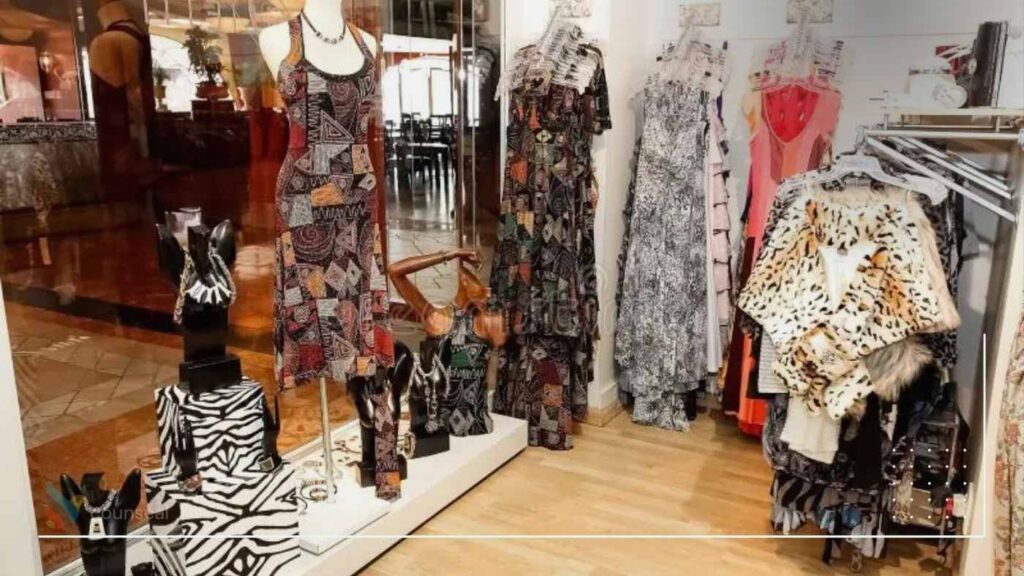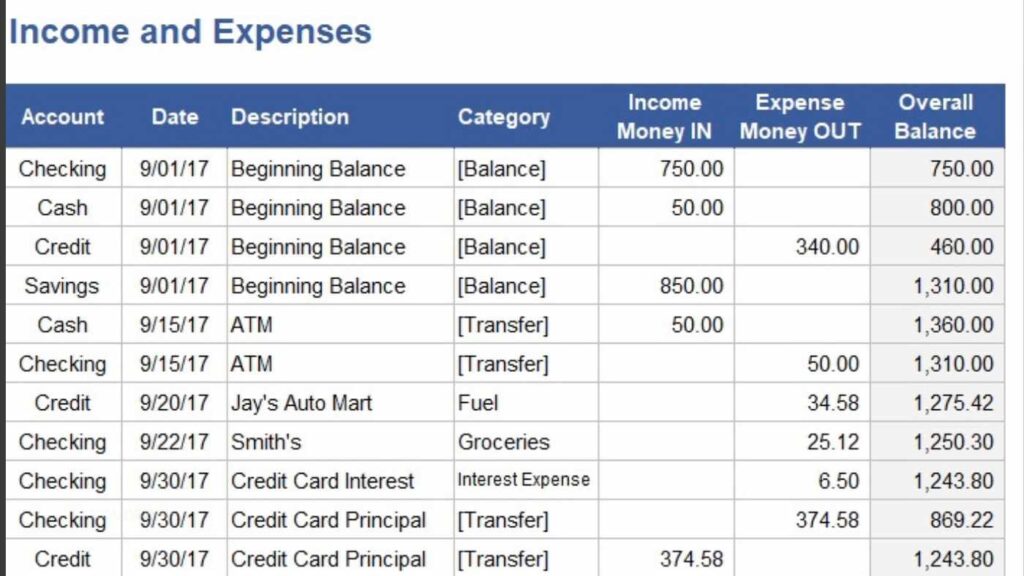How to Start a Nigerian Clothing Business in 14 Steps

by Counseal Team
Updated September 26, 2024

The fashion landscape is ever-evolving with trends; this update ensures that you have the latest information and strategies to launch your clothing business with flair.
Let’s dive in and make your clothing business a fashion sensation!
- Step 5: Establish relationships with reliable suppliers and manufacturers
- Step 6: Design Your Clothing Line: From Sketches to Prototypes
- Step 7: Price Your Products: Determine Profit Margins and Competitive Pricing
- Step 8: Create an effective marketing and advertising plan
- Step 9: Setting Up Your Online and Offline Store: Create a Seamless Shopping Experience
- Step 10: Establishing Partnerships: Collaborate with Influencers and Retailers
- Step 11: Create a Sales and Distribution Plan: Reaching Customers Nationwide through Efficient Supply Chain Management
- Step 12: Hiring and training skilled staff for your clothing business
- Step 13: Monitoring Financial Performance: Track your Revenue and Expenses
- Step 14: Expand your clothing business and stay ahead of the competition
- Frequently Asked Questions
Quick Takes
How much does it cost to start this business?
It will cost anywhere between N100,000 and several millions of naira to start. It could be cheaper if you produce and supply based on demand and customer requests.
How much can you make per month?
Your income will depend on how well you can reach customers and your pricing strategy
What is the minimum required to start this business?
The minimum required is N100,000.
What are the best states to start this business?
A clothing line business will thrive in any state in Nigeria. Your success will depend on your market skills, your business to your local target audience and how it resonates with them.
What are the known examples of this business?
Examples of clothing line businesses in Nigeria are:
- Addose
- Things Nigerians Love (TNL)
- Style by SAI
- Crotchet designs by Ore
- Ninie Official designer wears

Step 1: Research the Trends and Opportunities in the Nigerian Fashion Market:
This is crucial in order to understand the demands and preferences of the target audience and identify any gaps that you can capitalise on.
By staying on top of emerging trends and consumer behaviour, you can gain valuable insights into what sells well and what doesn’t in the Nigerian fashion scene. This research also enables you to identify potential niches or untapped markets to cater to.
This gives you a competitive edge in the industry.
Research is essential for success, as it lays the foundation for your entire business strategy. By knowing current and future trends, you can make informed decisions regarding product offerings, pricing, and marketing strategies.
Researching the fashion market allows you to stay ahead of the competition and continuously innovate in order to meet the evolving needs of your customers.
Understanding the opportunities present in the Nigerian fashion market allows you to position your brand and products effectively and capitalise on the growing demand for locally made clothing.
In conclusion, by staying up-to-date on the latest market trends, you can identify potential niches and position your brand effectively. Doing research makes sure you are ready to take advantage of the booming Nigerian fashion industry and lays the groundwork for your overall business plan.
Step 2: Identify Your Niche and Target Audience: Find Your Unique Selling Point

The Nigerian fashion industry is incredibly diverse and competitive, so it is essential to carve out a specific niche and understand who your target audience is. This will help you create a unique selling point that sets your business apart from others in the market.
To identify your niche, consider the various segments of the Nigerian fashion industry. These include traditional wear, contemporary fashion, and luxury designs.
Assess the demand and competition within each segment and identify where there may be gaps or opportunities. This will allow you to narrow down your focus and specialise in a specific area that aligns with your skills, interests, and market potential.
Once you have identified your niche, it is crucial to determine your target audience. Understand the demographics, preferences, and purchasing behaviours of your potential customers.
This will help you tailor your products, marketing strategies, and brand message to appeal to your target audience effectively.
Finding your unique selling point – a distinctive feature or quality that sets your business apart from competitors – will help you attract and keep customers, as well as establish your brand identity in the Nigerian clothing market.
Step 3: Create a Business Plan: Conduct a feasibility study and Map Out Your Clothing Business

Once you have a clear vision for your Nigerian clothing business, it’s essential to conduct a feasibility study to assess the viability of your venture. This helps you determine:
- if there is a market demand for your products,
- identify potential competitors, and
- understand the financial requirements needed to start and sustain your business.
By conducting thorough market research and analysing industry trends, you can gain valuable insights that will inform your business strategy and set you up for success in this competitive landscape.
After completing your feasibility study, the next crucial step is to map out your clothing business through a comprehensive business plan.
This business plan, which will serve as your roadmap, should outline:
- your business goals,
- marketing strategies,
- product line,
- financial projections, and
- operational processes.
It will provide you with a solid foundation and direction for your business and act as a reference point to gauge your progress.
If you are seeking funding, a well-crafted business plan will help you stay focused, make informed decisions, and navigate the challenges that may arise along the way.
This will not only help you understand market dynamics and competition but also guide your strategic decisions and keep you on track towards achieving your business goals.
Remember, the clothing industry is constantly evolving, so it’s crucial to review and adjust your plan regularly to ensure it remains relevant and responsive to the ever-changing market trends.
Step 4: Register Your Business: Legal Obligations and Requirements

Registering your Nigerian clothing business is a crucial step that ensures your venture operates within the confines of the law. To establish your business as a legal entity, you need to comply with the obligations and requirements.
This typically involves:
- getting the permits and licences,
- registering your business name with the Corporate Affairs Commission (CAC), and
- acquiring a tax identification number from the Federal Inland Revenue Service (FIRS).
When registering your business, it’s important to understand the various legal structures available, such as:
- sole proprietorship,
- partnership, or
- limited liability company (LLC).
Each structure carries its own advantages and responsibilities, so it’s essential to assess which one aligns best with your goals and resources.
By fulfilling these legal obligations, you not only safeguard your business from potential legal consequences but also gain credibility and trust from potential customers and partners.
Ultimately, registering your Nigerian clothing business sets a solid foundation for long-term success and paves the way for future growth opportunities.
Step 5: Establish relationships with reliable suppliers and manufacturers

This step is crucial, as it ensures that you have a steady supply of high-quality materials and products to meet the demands of your customers. By working with reliable suppliers, you can ensure that your clothing business maintains a high standard of quality, which is essential for success.
Establishing strong relationships with manufacturers can help you negotiate better deals and maintain a consistent supply chain, ultimately reducing costs and maximising profitability.
To establish relationships with reliable suppliers and manufacturers, it is important to:
- conduct thorough research and due diligence.
- Look for suppliers and manufacturers with a proven track record of delivering quality products on time.
- Attend trade shows and industry events to meet potential partners face-to-face and get a better understanding of their capabilities.
Networking with other professionals in the fashion industry can provide valuable insights and recommendations for reliable suppliers and manufacturers.
Building strong relationships with your suppliers and manufacturers will not only ensure a steady supply of goods but also open up opportunities for collaboration and growth in the future.
Step 6: Design Your Clothing Line: From Sketches to Prototypes

This step should be the most relatable for you, so we will just briefly highlight what to expect.
From sketches to prototypes, this step is crucial to ensuring that your creations align with your brand and appeal to your ideal customers.
Once you have identified your target market and established your brand identity, it’s time to bring your vision to life by designing your clothing line.
Start by sketching your ideas on paper or using digital design software. Consider factors such as colours, shapes, and styles that resonate with your target audience. Once you have a selection of sketches, it’s time to turn them into tangible prototypes.
Working with a skilled pattern maker and sample maker, create physical samples of your designs. This will allow you to see how the garments look and feel and make any necessary adjustments before manufacturing on a larger scale.
Remember to test the prototypes on different body types to ensure they are inclusive and cater to diverse customers.
Step 7: Price Your Products: Determine Profit Margins and Competitive Pricing
It is crucial to determine your profit margins and competitive pricing.
Profit margins are essential, as they determine the profitability of your business. It involves calculating the difference between your product’s selling price and the cost of production. By understanding how much profit you need to make in order to cover expenses and generate revenue, you can set the right prices for your products.
Competitive pricing is equally important in the Nigerian fashion industry. It involves researching and analysing the pricing strategies of your competitors. This allows you to position your products effectively in the market by offering competitive prices that both attract customers and generate profit for your business.
Factors to consider when determining the optimal pricing range are:
- quality
- design
- target market
A careful consideration of these factors will give you a competitive edge in the industry.
This step requires careful analysis and consideration of market trends, customer preferences, and your own business goals.
With the right pricing strategy in place, you can effectively attract customers, generate revenue, and establish a firm presence in the Nigerian fashion industry.
Step 8: Create an effective marketing and advertising plan

By now, you realise that it is crucial to have a comprehensive plan in place to start a business.
This plan should include:
- identifying your target market
- understanding their needs and preferences
- developing strategies to communicate your brand message to them
By utilising various marketing channels such as social media, influencer collaborations, and traditional advertising, you can raise brand awareness and generate sales for your clothing business.
In this competitive industry, it is crucial to differentiate your brand and stand out from the crowd. Your marketing and advertising plan should focus on establishing a unique selling proposition and highlighting the key features and benefits of your clothing line.
It should also consider the current fashion trends in Nigeria and tailor your marketing efforts ensuring that your brand remains relevant and appealing to your target market.
By continuously evaluating and adjusting your marketing strategies based on consumer feedback and market trends, you can maximise the success of your clothing business in Nigeria.
Step 9: Setting Up Your Online and Offline Store: Create a Seamless Shopping Experience

To establish a successful Nigerian clothing business, it is crucial to create a seamless shopping experience for your customers, both online and offline.
In today’s digital age, having an online presence is essential for reaching a wider audience and increasing your sales potential.
Invest in building a user-friendly website that showcases your products with high-quality images and detailed descriptions. Implement secure payment options and an efficient delivery system to enhance customer satisfaction.
Simultaneously, don’t neglect the importance of maintaining a physical store. This allows customers to have a tactile experience with your products and fosters a sense of trust.
Ensure that your store layout is visually appealing and that the products are arranged in a logical and organised manner. Train your staff to provide excellent customer service, as this personal touch can significantly impact a customer’s decision to make a purchase.
Remember to integrate your online and offline stores seamlessly by providing consistent branding, pricing, and inventory across both platforms. By offering a frictionless shopping experience, you will increase customer loyalty and drive strong sales growth for your Nigerian clothing business.
Step 10: Establishing Partnerships: Collaborate with Influencers and Retailers

In today’s competitive fashion industry, it is crucial to establish strong partnerships to reach a wider audience and gain recognition. Collaborating with influencers and retailers can significantly boost your Nigerian clothing business’s visibility and credibility.
By partnering with influencers who have a large following and an influential presence in the fashion community, you can tap into their existing audience and attract new customers. Partnering with retailers gives you the opportunity to showcase your products in established stores, increasing your brand’s exposure and driving sales.
When selecting influencers and retailers to collaborate with, it is important to consider your target audience and brand positioning.
Look for influencers and retailers whose values and aesthetics align with your brand’s identity. Engage in meaningful partnerships that go beyond mere promotion, incorporating collaborations that allow influencers and retailers to showcase your clothing in their own unique and creative way.
By establishing strategic partnerships, you can leverage the reach and expertise of influencers and retailers, ensuring the success of your Nigerian clothing business in the competitive fashion market.
Step 11: Create a Sales and Distribution Plan: Reaching Customers Nationwide through Efficient Supply Chain Management

This step is crucial, as it ensures that your products are available to a wider customer base and enables you to meet their demands effectively.
Establishing a strong supply chain management system will enable you to move your products from manufacturing to distribution and finally to the end consumer with efficiency. It will also help with minimising costs and improving customer satisfaction.
To successfully reach customers nationwide, it is essential to establish strategic partnerships with distributors, retailers, and online platforms. This allows you to tap into existing distribution networks and leverage their customer base and expertise.
Utilising technology and e-commerce platforms can help extend your reach and easily connect with customers across different regions.
By carefully planning your sales and distribution strategy, you can ensure that your clothing business is well-positioned to meet the demands of a diverse and growing customer base in Nigeria’s booming fashion industry.
Step 12: Hiring and training skilled staff for your clothing business

As your business grows, you will need to assemble a team of talented individuals who can contribute to the success and growth of your brand.
This includes hiring skilled designers, tailors, salespeople, and administrative staff who can bring their expertise and passion to your business. By carefully selecting and training your staff, you can ensure that your products are of the highest quality and that your customers receive excellent service.
When searching for potential employees, it’s important to consider their qualifications and experience in the fashion industry. Look for individuals who possess a strong understanding of different fabrics, sewing techniques, and trends.
Assess their ability to work collaboratively, adapt to changes in the market, and provide exceptional customer service. Once you have hired your team, invest time in training them to align with your brand’s values, quality standards, and customer expectations. By equipping them with the skills and knowledge, you can create a cohesive and talented workforce that will propel your clothing business towards success.
Step 13: Monitoring Financial Performance: Track your Revenue and Expenses

In the fast-paced world of Nigerian clothing businesses, it is crucial to monitor your financial performance closely. Tracking your revenue and expenses allows you to
- make informed decisions
- identify areas for improvement
- ensure the long-term sustainability of your business
By accurately documenting your income and expenditures, you can gain insights into your cash flow patterns, identify profitable product lines, and cut down on unnecessary costs. This step is essential for maintaining financial stability and maximising profitability as you navigate the dynamic Nigerian fashion industry.
To track your revenue and expenses effectively, it is advisable to use accounting software or a system that can automate the process. This will not only save you time but also reduce the likelihood of errors.
Regularly reviewing your financial reports and comparing them against your business goals and targets will give you a clear picture of your financial health.
By monitoring your revenue and expenses meticulously, you can make data-driven decisions to optimise your operations and secure sustainable growth in the competitive Nigerian clothing market.
Step 14: Expand your clothing business and stay ahead of the competition

As the Nigerian fashion industry continues to grow and evolve, it is crucial for entrepreneurs to adapt and innovate constantly. Expanding your clothing business allows you to reach a wider audience and increase your profitability.
To stay ahead of the competition, it is important to keep up with the latest market trends and consumer preferences. Conducting regular market research will help you understand the needs and wants of your target audience, enabling you to develop new and exciting products that meet their demands.
Investing in strong branding and effective marketing strategies will help you build a loyal customer base and differentiate yourself from competitors.
In order to expand your clothing business successfully, you may consider:
- opening new retail locations
- exploring e-commerce platforms
- partnering with other fashion retailers or influencers.
By diversifying your distribution channels and collaborations, you can increase your visibility and reach new customers. Embracing technological advancements and social media will also play a vital role in expanding your business and staying ahead in the competitive Nigerian fashion industry.
Frequently Asked Questions
How do I write a clothing business proposal?
There is a general layout that all business proposals are expected to follow. This include
- An executive summary.
- Your mission statement
- Market analysis
- Establish your core products
- Your organisational structure
- Your operations plan
- Propose a marketing plan
- Make a financial plan
- State your plan for future growth
If you need help with your business plan, you can build a free business plan here.
How do I start a small clothing business from home with no money?
The best approach to starting with little or no money is to start an online business. You can showcase your work freely through social media to attract customers.
Is selling clothes profitable in Nigeria?
The sale of clothes has proven to be one of the most profitable businesses after the food business. This transcends beyond a clothing line business and applies to many clothing businesses.
Can I put my logo on wholesale clothing?
This depends on your agreement with the buyer. Some buyers source goods to rebrand and sell as their own products. It is your choice to make.
How do I start a fashion line in Nigeria?
In summary, you can start in 14 brief steps:
- Research the trends and opportunities in the Nigerian fashion market
- Identify your niche and target audience
- Create a business plan
- Register your business
- Establish relationships with suppliers and manufacturers
- Design your clothing line
- Price your products
- Create an effective marketing and advertising strategy
- Set up your online and physical store
- Establish Partnerships
- Create a sales and distribution plan
- Hire and train skilled staff
- Monitor Financial Performance
- Expand your clothing business and stay ahead of competition




